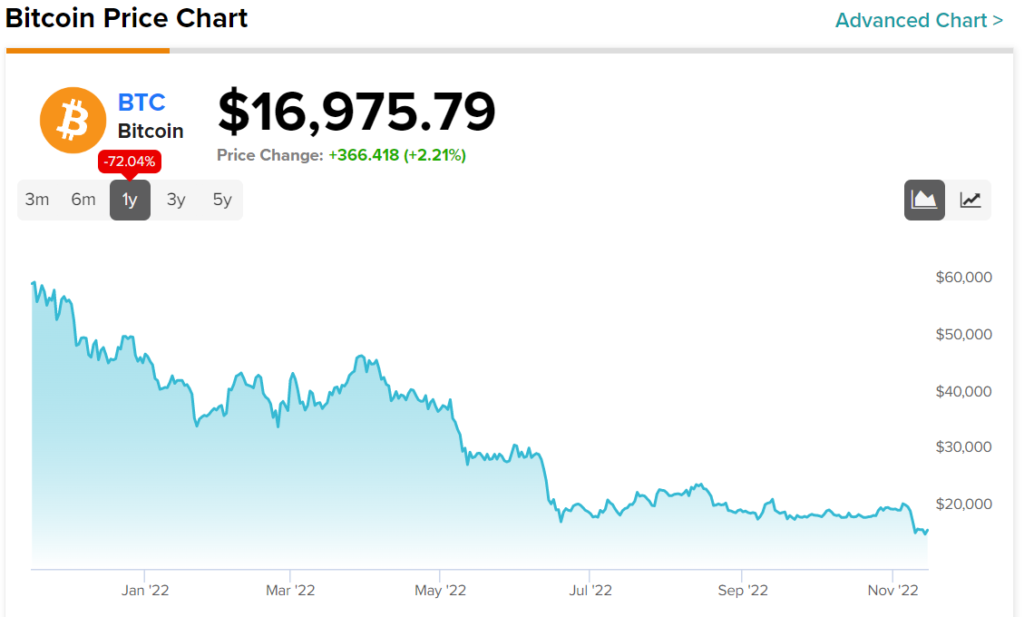The eye-popping auction figures that characterized the Non-fungible tokens (NFTs) frenzy in 2021 raised newfound awareness of the crypto ecosystem, encouraging adoption and, consequently, speculation. Yet, after the tremendous run-up, 2022 has seen favor turn to ridicule for NFTs and other cryptocurrencies such as Bitcoin (BTC-USD). The landslide that began with the Terra catastrophe in May wreaked havoc across the spectrum, with NFTs emerging as one of the worst-hit crypto segments.
Pick the best stocks and maximize your portfolio:
- Discover top-rated stocks from highly ranked analysts with Analyst Top Stocks!
- Easily identify outperforming stocks and invest smarter with Top Smart Score Stocks

Recent reports indicate that the value of most NFTs has dropped significantly over the past few months while NFT trading volumes have dried up. Critics have started claiming that the “NFT mania” is finally over, the bubble has burst, and NFTs won’t be making a return anytime soon.
How much of it is accurate and justified? Or is this really just the end of the beginning? To gain a clearer view of what transpired, what’s happening behind the scenes, and what the future holds, we sat down with Justin Sun, the founder of Tron Network and the Permanent Representative of Grenada to the WTO.
Justin Sun ranks among the long-running crypto evangelists. With his team, Sun has introduced the TRON Network and the accompanying decentralized autonomous organization (DAO) to include the community in the network’s development process. TRON is currently home to a wide range of products and services, including several governmental and regulatory projects.
Additionally, Sun has been one of the early proponents of the NFT boom. In early 2021, he established an NFT investment fund focused on acquisitions of fine art, which would be digitally registered on the blockchain, after he purchased a Picasso and a Warhol.
(The following interview was conducted before the FTX collapse.)
The NFT market has taken a dramatic turn over the last six months, with trading volume down by nearly 97% since the highs of January 2022. What do you think caused this massive downturn in NFT trading volume? Also, how do you expect the NFT market to behave over the remaining few months of the year?
Justin: A combination of factors contributed to the dramatic decline in NFTs. Many people diversified their crypto holdings during the last bull market. When the prolonged crypto winter set in, it forced investors to reposition portfolios and rotate out of the riskier assets like NFTs, all while knocking out the speculative bids in NFT markets. On top of that, the play-to-earn (P2E) frenzy faded substantially, adding to the meltdown.
I am not sure if the NFT market will bounce sharply through the end of the year due to macroeconomic and geopolitical headwinds. Frequent interest rate hikes and the rising strength of the USD are other important factors dampening investors’ outlook.
With many promising Web3, Metaverse, and P2E projects in the pipeline, do you see NFTs emerging as the “underlying mechanism” that supports these activities? More importantly, do you view NFTs as a critical growth driver for future blockchain technology?
Justin: Yes, the current generation of NFTs doesn’t really offer much in terms of utility. Luckily, many upcoming projects are experimenting with new use cases, whether for Web3, the metaverse, or play-to-earn (P2E) and play-and-earn (P&E) games.
That said, NFTs are and will continue to be the underlying mechanism for multiple initiatives and advances during this critical stage of Web3 development. Concepts like fractional NFTs, aNFTs, and other applications will assuredly help advance blockchain technology and accelerate mainstream adoption, especially as accessibility improves and the learning curve flattens.
As more countries embrace blockchain and cryptocurrencies, what needs to be done, especially in terms of ecosystem development, to make it easier for users to join the crypto revolution?
Justin: I firmly believe that blockchain developers and entrepreneurs should focus exclusively on user experience and accessibility. These emerging technologies are still too “futuristic” for the vast majority of prospective users. It can’t be a one-way approach to ecosystem development.
Instead, we need to shake the box and persuade the target audience on multiple levels by advancing awareness, user-friendly products, regulations, and so on – all of which will ultimately encourage more users to adopt.
We discovered that Dominica chose the TRON blockchain to issue its official coin. What do you think about this recent development? Could you help our readers understand the Dominica Coin (DMC) concept and the TRON blockchain’s role in transforming this idea into reality?
Justin: The introduction of Dominica Coin (DMC) is a historic milestone for Dominica as the local government embarks on its mission to enhance economic growth in the region and support innovation. Dominica Coin (DMC) is effectively a fan token designed to help tourism in Dominica by promoting its natural attractions and economic activity. TRON’s role in this effort is designed to help the Dominican government achieve its goal through energy and cost-efficient infrastructure.
Several countries are already experimenting with CBDCs and other blockchain-based financial primitives. Do you believe CBDCs could redefine finance as we know it? Will an increasing number of countries opt to use blockchain technology to overcome the shortcomings of existing financial services practices?
Justin: As far as I know, nearly 100 countries are currently experimenting with CBDCs. Essentially, CBDCs can play a key role in draining unnecessary intermediaries from the existing financial system. Besides reducing economic friction by reducing counterparties needed in payments, trade, and banking, the technology can slash financial services costs for consumers and enterprises alike by facilitating trusted, direct connectivity between transacting parties.
Yes, as blockchain technology advances and unlocks new use cases, more and more countries will embrace it. Besides the status quo, there is no alternative because blockchain is the next logical step in technological advancement. Governments will unequivocally have to experiment with it to stay relevant or risk missing out on the 4th Industrial Revolution.
Please tell us more about the TRON blockchain, its recent ecosystem developments, and how you plan to make TRON the go-to solution for retail, institutional, and governmental use.
Justin: TRON is among the most energy-efficient and low-cost blockchains in the market today. The infrastructure is purposefully designed to serve a wide range of real-world applications. The TRON ecosystem is continuously growing, with more than 118 million accounts and counting.
Our massive ecosystem is home to hundreds of wallets, chains, dApps, NFT marketplaces, and much more. Most importantly, we are continuously optimizing existing features as well as implementing new features, expanding our strategic partnerships with key players, among other activities, to make TRON the go-to public blockchain for everything.
How much untapped potential does blockchain technology exhibit, especially in terms of facilitating a wide range of real-world use cases? More specifically, what is your opinion on the current state of blockchain technology, and how do you see it maturing in the coming years?
Justin: Well, blockchain technology is still in an early stage. Yes, we have unlocked several real-world use cases but haven’t yet fully scratched the surface. The existing blockchain stack is more of an experimental phase where we are learning from errors and developing better primitives.
However, technological advancements are happening at a rapid pace. Emerging projects and solutions have already unlocked numerous new applications that extend the usefulness of the blockchain landscape and expand new horizons of opportunity. The main reason this progress will endure and continue to snowball is due to a strong and vocal community that is agile, energized, and upbeat about the future potential blockchain harbors.



















